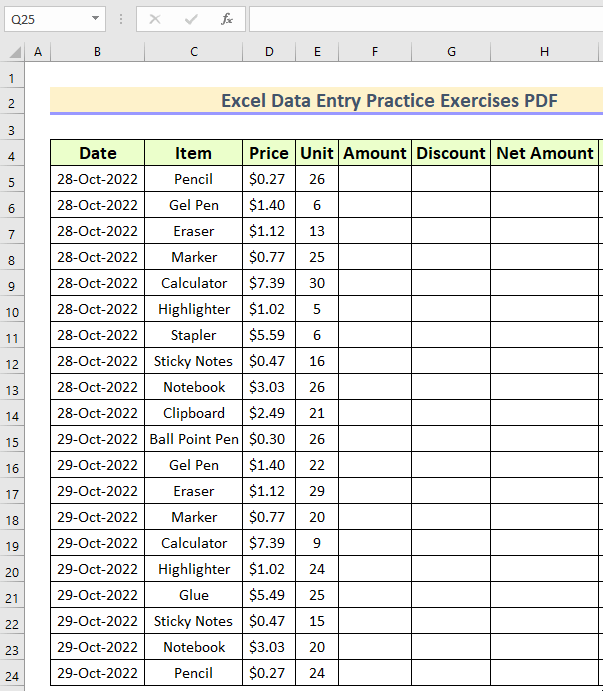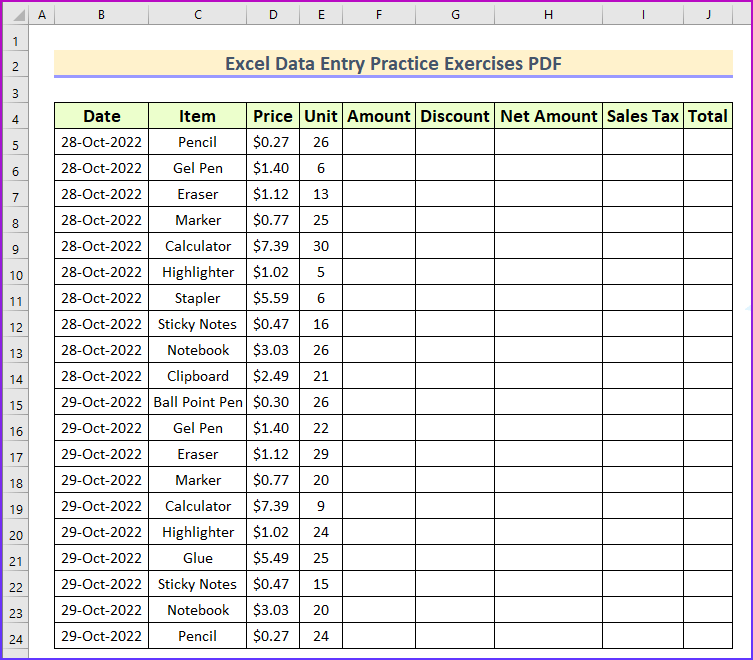
An increase to a liability occurs when the company borrows to purchase an asset and pays later. Repaying a liability is a debit to the liability (d.) (a. & c.) do not impact a liability. A related account is Insurance Expense, which appears on the income statement.
Debits and Credits (Practice Quiz)
The term “prepaid expenses” refers to expenses that are paid before the actual due date. The practice of allowing discounts to customers on goods purchased. When a business commences and capital is introduced in form of cash.
Journal Entry for Income Received in Advance
C. The company can not owe someone and be owed as a result of the same transaction. The other choices are cash being paid or collected, which are common transactions. The truck increases with a debit and the cash decreases with a credit. D. Issuing stock to investors increases cash, recorded with a debit, and increases common stock, recorded with a credit.
Comments for Basic Accounting Journal Entries Exercise
14) Purchased equipment for $2,500; paid $1,000 down and will pay the different in monthly payments during the next year. A. This is an increase to prepaid insurance. Prepaid insurance is an asset and assets increase with a debit. D. Retained earnings decreases when dividends are paid or the company incurs a net loss. Paying dividends is a reduction to shareholder’s equity. Decreases to shareholder’s equity is recorded with a debit.
Quiz 4 – Journal Entries – Beginner
Perform horizontal and vertical analyses of the liabilities and stockholder’s equity sections of the balance sheets for the two most recent years shown. Horizontal analysis involves showing the dollar amount and percentage increase or decrease of the latest year over the preceding year amounts. Vertical analysis the 18th amendment involves showing the percentage of total liabilities and stockholder’s equity that each account represents as of the balance sheet dates. Write comments on any important changes between the two years that are evidence of decisions made by management. Record journal entries for each of the following transactions.

Examples of Journal Entries with a PDF
- A related account is Insurance Expense, which appears on the income statement.
- The cash was received, and a note promising to return the $ 80,000 on 2010 May 30, was signed.
- Account balances are the amounts on the income statement and balance sheet below.
- Each asset, liability, owner’s equity, revenue, and expense account gets a “T” account.
- (a) On 1st April 2023, Ram started a business with cash ₹5,00,000.
Knowing which account to debit and which to credit is crucial. We will decrease Cash since the company paid Mr. Gray $7,000. And, we will record withdrawals by debiting the withdrawal account – Mr. Gray, Drawings.
Actually, we simply transferred the amount from receivable to cash in the above entry. Borrowed $100,000 from the bank to be repaid in 3 years. Collected $7,500 owed from customers in 3) above. Sold $15,000 of inventory on account (you have not been paid yet), sales price of $27,500. Borrowed $150,000 from the bank to be repaid in 3 years.
Amortization is the same as depreciation but is charged as an expense only on intangible assets. Step 2 – Adjustment entry when the prepaid expense expires. Step 1 – At the time of paying an expense before the due date in cash.
8 Desks and chairs were purchased for the office on account, $ 28,800. 14 Supplies were purchased on account for use this month, $ 3,000. 2) Paid $2,500 owed to employees for work performed this period. The customer does not pay for goods providedd. Example – Goods worth 100 purchased on credit from HM Ltd. returned by us. Example – Goods worth 200 sold on credit are returned by XYZ Ltd.
